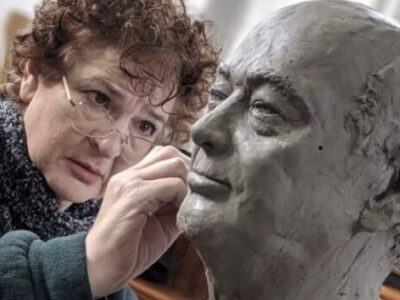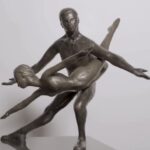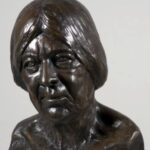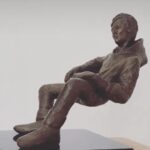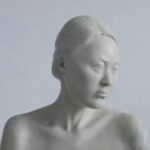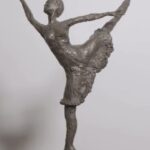Carole Fenton
At school, I enjoyed all subjects – science, music, arts – and wanted to pursue everything. However, during my O-levels, I had to make a choice. I thought it was quite tricky to make a career out of the humanities and the arts, and it’s quite difficult to have the sciences as hobbies. Therefore, I decided to focus on science as my career and keep the arts as my hobby. Little did I know that I wouldn’t have any time for hobbies until my late 50s!
After finishing my A-levels, I applied to medical school but unfortunately, I didn’t get in. So, I ended up pursuing a pharmacology degree at UCL. Later, I was offered a job at SmithKline Beecham. However, deep down I still wanted to be a doctor. So, I reapplied and happily got accepted the second time. Unfortunately, just around that time, my father went bankrupt and my parents became homeless. As a result, I had to support myself through medical school. I worked in various jobs such as a betting shop, tutoring A-level students, and even singing in a nightclub. On finishing my studies, I felt a deep sense of pride knowing that I had earned it entirely.
I’m a people person, and I chose to pursue a career in general practice as I wanted to connect with my patients on a personal level, not just treat their diseases. I also specialised in psychosexual medicine, and I ran a clinic, which was ahead of its time. I thoroughly enjoyed my career in medicine, and I didn’t have a single day where I felt bored or unnecessary.
I got married in my late thirties and later had three children who are now all grown up. When my children reached their teenage years, I suddenly found myself with half a day each week where I wasn’t busy being a mum or working. I realised that I missed doing art, so I decided to start taking a life sculpture class.
At first, I didn’t take it too seriously. I attended one session a week during term time for years. After improving my skills over time, I now consider myself a figurative sculptor. As a doctor, I looked at hundreds of thousands of bodies and faces. But I was looking at them very much in terms of function and not form. However, sculpting allows me to approach what I know well with a new mindset and a different part of my brain. I can now appreciate the beauty of every face, every hand, every neck, every movement and every pose, in a different way.
One of my proudest achievements is the sale of a piece called “The Dancer”. I came across an interesting pose in a photo and decided to transform it into 3D art. My son helped me identify the subject, who was Lloyd Wright, a principal dancer in the Martha Graham Dance Company in New York. When I showed him the artwork, he was delighted and shared it on his Instagram account. Soon after, someone saw the piece and expressed their interest in buying it. And that’s how I sold my first piece to a collector in New York.
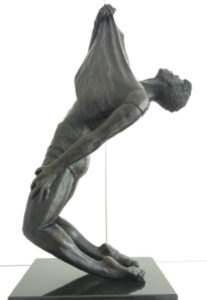
The feeling of accomplishment I experience while sculpting is very different. As a doctor, you expose yourself to real pain and suffering daily while helping people through their worst times. It is a very challenging and demanding profession, and often the only reward is the absence of a problem. On the other hand, sculpting allows me to create a physical, tangible object that I can offer to the world, which is an incredibly satisfying feeling. By making things that give pleasure to other people, I am contributing something worthwhile that gives me a sense of purpose.
I love the fact that as a sculptor, my career is both difficult and multifaceted. This means that I will never have learned or understood everything there is to know about it. There’s always more to discover, and I’m excited to continue doing so. I enjoy experimenting with different styles, including hyper-realism and impressionism. I’ve also worked with metal, 3-dimensional embroidery, and I’m even starting to explore glass. I believe that some of my best art has come from situations where I didn’t know where it was going, and it ended up somewhere that I hadn’t planned at the beginning. This is a very different mindset than medicine, but it keeps me passionate and engaged in my work.
As well as sculpting, I sing a lot of musical theatre and I’m learning Hebrew because I have two Israeli grandchildren. I am also keen on needlework. I somehow don’t have enough time in the week to do everything!
To view Carole’s incredible work, visit her Instagram page here.
Or search @carolefentonsculpture on Instagram
Circle Square Member Q&A
What 3 words best describe you? Resilient, determined, empathetic.
If you could offer your younger self one piece of advice, what would that be? Try not to be so self-critical.
What do you consider to be your greatest achievement? Having children.
Which person (dead or alive) would you most like to invite to dinner? My husband. I absolutely love my husband. I can’t think of another person that I would rather have lunch with and I have lunch with him most days. He’s just my favourite person.
How has age strengthened your advantage? I don’t take myself quite as seriously as I used to. My mother had a saying, “When you’re 20, you worry about what other people think about you, when you’re 40, you say I don’t care what other people think about you. But when you’re 60, you realise they weren’t thinking about you in the first place.” I think you must be kinder and more compassionate to yourself.
What inspired you to join Circle Square? I have known Noam and Ruth for many years and have great admiration for them. I wanted to be part of something that is driven by passion.


